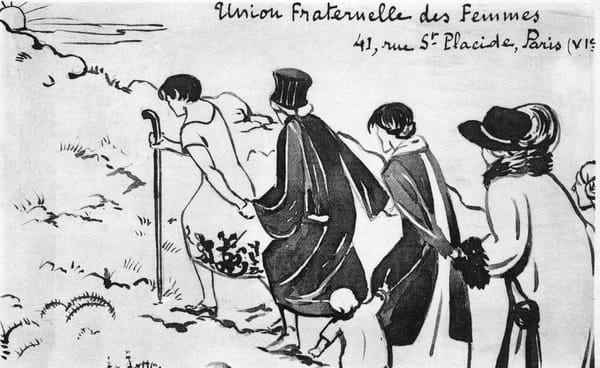On this new International Women’s Day on March 8, here are figures on gender inequalities and their evolution, but also keys to the origin of its date!
[Mis à jour le 8 mars 2022 à 12h05] This March 8 marks the date of International Women’s Day. Each year, this initiative, formalized by the United Nations in 1977, highlights the inequalities that still need to be bridged between women and men, with supporting figures… particularly in the professional world. On March 7, 2022, the Ministry of Labor notably published its fourth annual edition of the professional equality index. This is used to measure equal pay within companies with at least 50 employees. And the average rating of companies has gone from 85 points out of 100 in 2020 to 86 points out of 100 in 2021.
Labor Minister Elisabeth Borne also announced to Echos on March 7 that 16 companies which have “not reached 75 points for three consecutive years” will for the first time be subject to financial sanctions. The average net monthly salary of women in France is, according to INSEE at the end of 2019, 16.8% lower than that of men. Women’s rights activists also denounce, among other things, violence against women and feminicides, against a backdrop of sexism and patriarchy, knowing that in 2021, 113 women were killed by their spouse or ex-spouse (source: Femicide by companions or ex).
SP PAGEECIAL
Find out in our special page, by browsing using the summary at the topthe history of Women’s Rights Day and its origin, the reason for choosing the date of March 8 or even the theme chosen by the UN to symbolize the fight for women’s rights this year.
If the United Nations formalized this celebration (and its date) in 1977 and it was established in France in 1982 by President François Mitterrand, the origin of Women’s Day, which has become “Women’s Rights Day” , is to be sought further back in time: at the time of the struggle of working women for better working conditions, and that of the suffragettes for the right to vote, in the first part of the 20th century. In 1957, the newspaper l’Humanité saluted the centenary of March 8, 1857, the day when “the women garment workers of the city of New York went to parade in the streets, like men, carrying placards and banners “for better working conditions and respect for their dignity. In 1908, on June 21 this time, it was the turn of 250,000 suffragettes to demand the right to vote for women in London. A late 19th – early 20th century with a taste for emancipation that would encourage the emergence of International Women’s Rights Day, decades later. The first International Women’s Day took place on March 19, 1911 (in Europe and the United States) and was already advocating for more rights.

After the signing of the United Nations Charter in San Francisco in 1945 to proclaim gender equality as a fundamental right, demonstrations multiply once a year around the world for gender equality. These days are also an opportunity to take stock, particularly in figures, of the current situation. Associations of activists also take the opportunity to celebrate recent achievements as well as to voice the demands that remain on the agenda.
The choice of March 8 as a date dedicated to women’s rights comes to us from communist Russia. In 1921, Lenin already initiated March 8 as “International Women’s Day”, in memory of the first demonstration to have launched the Russian Revolutionin 1917. That year, Russian workers had decided to go on strike on the last Sunday of February in order to demand “bread and peace”. It was February 23, but in the Julian calendar… The date will become March 8 in our Gregorian calendar. It will be necessary to wait until 1977, in full sequence of relaxation between the blocks of the East and the West during the Cold Warfor the United Nations to adopt this calendar day after hesitating between several dates, such as March 19, a memory of the first parades in the United States in 1911.
A different theme is designated by theUN at each of the editions of the “Women’s Day” (“Womens Day” in English). For 2022, this is “Equality today for a sustainable future”. A theme, specifies the United Nations, “in recognition of the contribution of women and girls around the world who lead the offensive in adapting to and responding to climate change and its mitigation, in favor of the building a more sustainable future for all people.”
We might have expected a different evolution of the figures on the subject: according to a recent study YouGov *, Only 64% of French people consider women and men to be equal, compared to 69% in 2015. According to the same survey, 88% of the inhabitants of France questioned believe that women and men should generally receive equal pay… versus 93% in 2015. The study also gives other figures relating to the lived experience of women in terms of society’s perception of their strength and intelligence: faced with the statement “Someone assumed that I was weak because of my sex”, 54% of the women surveyed declared that this situation has already happened to them, compared to 13% of men surveyed. 36% of women in the YouGov panel also admit that someone has already assumed that they are “less intelligent because of their gender”, compared to 16% of men.
* online, from February 1 to 2, 2021, with 1,001 people representative of the French national population aged 18 and over from the YouGov France proprietary panel

